
-
@kellar42 I do think these pancake lenses, stuff I've seen with the Lumix 20mm as well, throw a lot of the conventional expectations out the window. I don't pretend to understand the nitty or the gritty, but their front element being smaller than, and actually able to take in all of the back element of, these anamorphics is my guess.
Even though they're kinda flavorless, as modern lenses are intended, they might actually have an unexplored advantage over glass folks would otherwise choose to work with these adapters.
I really dig your cone of step-up-rings. Space between the front element of the taking lens and the back element of the animorphic wouldn't be a good thing I would think but Iove it when someone proves you can't always depend on conventional thinking when you're using items in unconventional ways.
-
Here is a puzzle for us @BurnetRhoades . I purchased an Nex5n this week to always have something for photos with me at all times. Because this blew my GH3 budget for the moment and could use the 1080 60p overcrank sometimes, as well as just for fun, I found a box of step-up rings at the local photo shot and outfitted the thing to take my LA7200.
First weird happening...Sony 16mm 2.8 Pancake on an APS-C sensor, no vingeting of any kind of the LA7200. That isn't supposed to happen, right? Second weird thing...this shot below is maybe 18 inches from the lens, tops? Just a grab and the hand is moving, but the point is, I can get sharp focus at that distance. I do that on the GH2 and I get the weird blurry smear of an attempt at Close focus without a diopter. What the hell is going on?
Only two theories right now...something with the Sony pancake is magical, or, the only box of step up rings in the country is fairly limited and in order to make it work I had to go 49-48, 48-55, 55-62, 62-77 (I have a 72-77 permanently on the back of the LA7200). I'm not optical expert, could this little cone putting about an inch between the lens and adapter mean anything? Has infinity no problem.
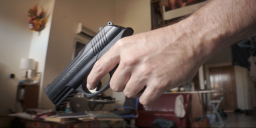
 Screen Shot 2013-02-03 at 9.16.55 AM.png2873 x 1233 - 4M
Screen Shot 2013-02-03 at 9.16.55 AM.png2873 x 1233 - 4M
 Photo on 2-3-13 at 9.30 AM.jpg1080 x 720 - 110K
Photo on 2-3-13 at 9.30 AM.jpg1080 x 720 - 110K -
Yeah, I'd seen other 20mm Lumix pancake footage used as a taking lens that looked good and unexpectedly good even at wide open, something my 35mm Nikkor can't pull off without getting "dreamy" at f/1.4. That Lumix lens is so small and the glass as well by comparison to your average SLR lens. The size of the optics themselves must allow for overall better performance at the edges, like the classic 8mm and 16mm anamorphics.
I haven't picked one up yet wanting to get a chance to try out a 17.5mm Nokton to see if that picked up the edges on my Century Optics, though now, with that Metabones adapter on the horizon, it's going to be harder for me to pull the trigger on any super-specialized, super-expensive M43 lens because if I'm not shooting anamorphic it's going to be through a Metabones.
-
Good stuff. If I recall you've got some good posts along these lines in the thread about what we'd like to see from SLRMagic as well. Perhaps we can consolidate this stuff into some kind of anamorphic topic.
I agree on not being scared of wide angles. Wide apertures either, for that matter. Here, the 20mm at 1.7 with a LA7200 on the front, GH2 FlowMotion:
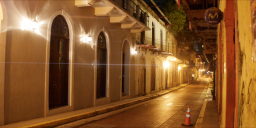
 Screen Shot 2012-10-30 at 10.00.52 PM.png2556 x 1096 - 4M
Screen Shot 2012-10-30 at 10.00.52 PM.png2556 x 1096 - 4M -
On the wide angle tip, here's some footage that I reference myself as making a pretty decent argument against limiting yourself to 24-28mm and above as your base wide-angle lens with these adapters. The Century is only 1.33x so, as long as you're not starting out with a fish-eye, you're going to reach vignette before you get anywhere near distortion or FOV that's anything but pleasing and consistent with what you see employed in film for true wides.
Agreed, there is visible CA in these stills, which I took from a re-render of some of the first anamorphic imagery I ever shot (WekFest Austin, Summer 2012). But I don't find it horribly ugly and I've seen similar levels in Super-35mm laser scans for $100M+ films. I'd sometimes have to analyze these sorts of optical issues so that I could properly marry digital effects elements to the frame and make it look like a whole. They aren't worth cursing over unless you're having to pull a green screen key.
This is using the nominal 14-42mm kit lens and no diopter @ 18mm. I'd bought my Tokina from Redstan before ever pulling the trigger on a Century Optics, to make sure I had one, but I wanted to test the limits of my lens combos without it so that I could adequately judge its value.
These stills are not only using the much pooped upon kit lens (since I hadn't received my F-to-M34 yet), they represent un-hacked GH2 footage. Like the doublet decision, I wanted to get familiar with my camera and see what it could do, and how it compared to the 7D I used to shoot Sick Boy before experiencing any of the patches.
I decided to go back to this old project file, transcode all the source clips with 5DtoRGB and give my new copy of ColorGHear (@shian) a whirl to see what I could do to enhance the colors and remove some of the haze that I felt in the original from the bad lighting at the show.
Anyway, my perspective is admittedly a narrow one and mostly influenced by my interest in anamorphics for future narrative and documentary work. I don't really care what is or isn't good enough or consistent with stills photography standards or wedding videos or industrials or fashion. The folks that have to make their purchasing and/or creative decisions based on their own specific needs needn't worry about mine either and do what they gotta do.
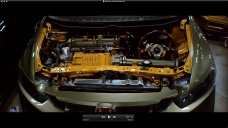
 WekFestCGstill01.png1920 x 1080 - 2M
WekFestCGstill01.png1920 x 1080 - 2M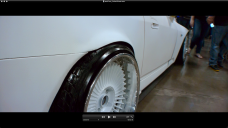
 WekFestCGstill02.png1920 x 1080 - 2M
WekFestCGstill02.png1920 x 1080 - 2M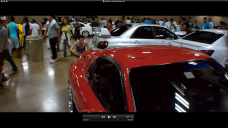
 WekFestCGstill03.png1920 x 1080 - 2M
WekFestCGstill03.png1920 x 1080 - 2M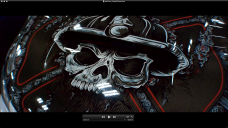
 WekFestCGstill04.png1920 x 1080 - 2M
WekFestCGstill04.png1920 x 1080 - 2M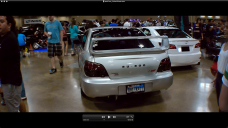
 WekFestCGstill05.png1920 x 1080 - 2M
WekFestCGstill05.png1920 x 1080 - 2M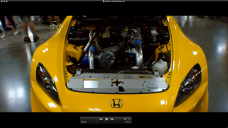
 WekFestCGstill08.png1920 x 1080 - 2M
WekFestCGstill08.png1920 x 1080 - 2M -
@kellar42 Yeah, in a moving image a little bit of these issues at the edge of frame aren't the end of the world. Sometimes it's not even a bad thing. I just started, finally, un-boxing some of my books and magazines after moving this last summer and came across an article in an old issue of American Cinematographer where one of my favorite DPs says as much. I'll have to go look at who it was again but I think it might have been Jeff Cronenweth, but I'm not sure since he's mostly shot S35 for Fincher.
Every time I get to thinking S35 is boring to look at, I have to remember what he and Savides did with Fincher in the format.
Anyway, I can understand certain types of projects requiring purely clinical lenses that never call attention to their presence at all...rectilinear, super-multi-coated, solid air devices that bend light in a thoroughly business-like manner. And that's fine. For some other guy :D
-
@BurnetRhoades good point. Was recently watching The Mission, which won an Academy Award for cinematography and was shot on Cooke Itals, and I noticed several scenes with visible blur on the edge of the frame that reminded me nothing so much of a couple of shots from my LA7200.
-
Assumptions made about what is and isn't doable with a Century Optics are as tied to the quality of the taking lens optic as well as the individual performance of the specific Century Optic being used. Same as any lens. Just look at comparisons of similar focal length within the same manufacturer on sites like Ken Rockwell.
A 28mm is not a 28mm is not a 28mm and the quality at center and edge is not consistent or sometimes good at all. That's before throwing another thick-ass piece of glass on the front pulling gymnastics and understanding these (particularly older) stills 35mm lenses weren't designed to be good at big stops, like most dslr filmmakers, especially the kooky anamorphic guys, like to shoot.
If there's enough variation in color, contrast, sharpness and edge performance in Panavision glass that world class DPs track serial numbers and/or build+purchase sets of optics from Cooke, Zeiss, etc. so that they have lenses that they know they can depend on (they don't just to to the rental house and say, "what'ya got?") then I'm not going to fault the little Century adapter.
Many of Rich's bad experiences with his, coloring his impression of them as a whole, have been countered by my own adapter and other material I've seen online (because I certainly don't think I'm the special little snowflake that has the one-and-only good one out there, however lucky I got with my selection).
edit: check out one of the most recent anamorphic, big screen, future classics that is Django Unchained. I had to chuckle a little to myself, in light of this back-and-forth Rich and I have had here and there on "what is wide?" "what is too wide?" and "what is too wide for the Century Optics?". During the final act, in the really dim interior lighting at Candy Land, you can detect both CA and softness at the edge of frame (that isn't due to the panty they hung on the lens), if you're so inclined to look for it.
;)
-
I'm using the century with the kit 14-42mm and with the +1 diopter, I can say that edge sharpness increase dramatically. The Century lens doesn't work well with lenses greater than 35mm. It gets blurrier as you increase your lens' focal length.
-
The best way to avoid the edge aberrations is to choose a taking lens that doesnt use the edges of the Century.
People seem to think that the limiting factor of the Century and LA7200 is the point where you see vignette. This is not the case. It may be with Sankors, Iscoramas and Kowas, but not the 16:9 converters types. In order to get low CA use a longer focal length. assuming a 28mm vignettes on aps-c then choose a 35mm or 40mm and cut away the edge nastiness all together.
Using a +0.4 achromatic diopter allows infinity focus and cleans up overall sharpness and CA, but no diopter will sort out CA and distortion at the edges caused by use of too wider taking lens.
Howdy, Stranger!
It looks like you're new here. If you want to get involved, click one of these buttons!
Categories
- Topics List23,980
- Blog5,725
- General and News1,352
- Hacks and Patches1,152
- ↳ Top Settings33
- ↳ Beginners255
- ↳ Archives402
- ↳ Hacks News and Development56
- Cameras2,362
- ↳ Panasonic992
- ↳ Canon118
- ↳ Sony156
- ↳ Nikon96
- ↳ Pentax and Samsung70
- ↳ Olympus and Fujifilm100
- ↳ Compacts and Camcorders300
- ↳ Smartphones for video97
- ↳ Pro Video Cameras191
- ↳ BlackMagic and other raw cameras115
- Skill1,960
- ↳ Business and distribution66
- ↳ Preparation, scripts and legal38
- ↳ Art149
- ↳ Import, Convert, Exporting291
- ↳ Editors191
- ↳ Effects and stunts115
- ↳ Color grading197
- ↳ Sound and Music280
- ↳ Lighting96
- ↳ Software and storage tips266
- Gear5,417
- ↳ Filters, Adapters, Matte boxes344
- ↳ Lenses1,580
- ↳ Follow focus and gears93
- ↳ Sound498
- ↳ Lighting gear314
- ↳ Camera movement230
- ↳ Gimbals and copters302
- ↳ Rigs and related stuff273
- ↳ Power solutions83
- ↳ Monitors and viewfinders340
- ↳ Tripods and fluid heads139
- ↳ Storage286
- ↳ Computers and studio gear560
- ↳ VR and 3D248
- Showcase1,859
- Marketplace2,834
- Offtopic1,319
Tags in Topic
- lens 458
- anamorphic 153
- century 9



